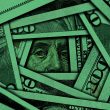by Hubert Marleau, Market Economist, Palos Management
May 24, 2024
A scarcity of high ranking economic reports and the advent of Memorial Day should have made this week listless. The focus was on the housing sector, which had produced sufficiently lacklustre home sales to bring about a negligible downward revision of the Q2 GDP projection of the Atlanta Fed’s NowCasting Model to 3.5%.
More importantly, the PMI services and manufacturing data, which handsomely beat estimates, supported the view that economic growth would remain above the historical 2% trend. Moreover, orders for durable goods rose 0.7% in April, marking the third monthly gain in a row. Given that there is no sign that the economy is petering out, the S&P 500 reached a new all-time high milestone of 5321 last week.
Bloomberg’s Tatiana told her readers on Wednesday that the benchmark had gone 313 trading days without a daily decline of 2% or more. There have only been 11 other such instances since 1929 without a daily selloff of this magnitude, ranging from 314 to 949 trading sessions. The thing is that everybody speaks of volatility, yet both stock and bond markets are relatively calm, in spite of geopolitical uncertainties, along with an inverted yield curve, concerns that inflation may be hard to tame and the monetary officials’ tenacity to postpone any interest rate cuts for now. On the stock side, the Cboe Volatility Index (VIX) - a measure of fear - is very low, while on the bond side, the Merrill Option Volatility Estimate (MOVE) -another gauge of fear - has been falling recently. Both are in bullish zones.
It’s perhaps a head scratcher for us commoners, but not for 17 out of the 18 Wall Street strategists followed by MarketWatch. Excluding JPM’s Marko Kolanovic as the last remaining bear, who has a year-end target of 4200 for the S&P 500, they all cheered for a range between 5100 and 5600.
Trusting that the Federal Reserve will achieve its 2% y/y inflation target without a recession and with reliance on positive corporate guidance, most macro forecasters have huddled closer, with few outliers. What is remarkable is the capitulation of Mike Wilson, who until recently was shooting for 4500, but has lifted his forecast to 5400 by the second quarter of 2025.
In order not to be outdone by his peers, Dr. Ed Yardeni gave the street his 5-year outlook for the S&P 500. Based on his Roaring 2020s scenario of strong productivity - a process that began last year -he forecast that sales volume and profit margins were bound to rise sufficiently to generate S&P 500 earnings per share of $400 by 2030, up 60% from an estimated $250 this year. Assuming that the 10-year Treasury bond yield will remain range-bound between 4.00% and 5.00% for this foreseeable period, it is quite possible that the benchmark could rise to 8000 in this scenario. AI is in the process of bringing significant productivity gains to nearly every industry, helping companies be more cost and energy-efficient.
Seen as crucial to the direction of the wider market, NVIDIA’s first quarter results indirectly gave the leadership the market wanted, being the main bellwether of the pace of AI progress. The overarching message was that the AI boom has staying power, threatening to disrupt virtually every major industry. It is supporting Jensen Huang, president of the most important stock on Planet Earth, who may be right in claiming that the “next industrial revolution” has begun, turning $1trillion of data centres into AI factories. Nvidia reported an epoch-making sale and earnings report, comfortably beating street estimates. Revenue more than tripled from a year ago to $26 billion and net profit soared more than sevenfold to $14.88, plus guidance was high.
According to Tom Lee, Nvidia may have provided the next catalyst to keep the good times going. He sees a wall of pent-up investor cash flooding markets because of the importance of the company to the broader technology thesis. Nonetheless, the S&P 500 backtracked on Thursday by 1.0%, in the wake of minutes from the Federal Reserve’s April 30 - May1 meeting, which revealed that several officials were willing and ready to actually raise the policy rate if deemed necessary. It was quite a surprise. But it was living proof that even NVIDIA - the ultimate “picks and shovels” company, which is benefiting immensely from an enduring gold-rush investment cycle for its AI chips - cannot fight the Fed.
However, investors should not lose sight of the fact that the technology boom alone should shrug off the Fed’s current posture. Productivity has the capability to drive economic growth higher and inflation lower and, in turn, drive the stock market even further. And there you are: the benchmark rose 37 points on Friday to end the week flat.
Copyright © Palos Management















